Table of contents
Ribwort plantain ( Plantago lanceolata, organic ?) is used as a phytopharmaceutical (plural phytopharmaceuticals) and as a wild food plant (wild herb) for various recipes, e.g. for raw ribwort plantain salad.
Using ribwort plantain in the kitchen:
The young leaves of ribwort plantain have a nutty, mushroom-like flavor. The tender leaves from the middle of the wild plant rosette are suitable for eating, while older ones are more fibrous and tough.
Can you eat ribwort plantain raw? The ribwort plantain leaves are cut into strips across the lengthwise fibers and used raw or cooked. The soft, budding inflorescences are similar in taste to the leaves. They are eaten freshly picked and used in the kitchen for salads and raw vegetables, or pickled raw in oil or vinegar with spices as a delicacy. The seeds refine vegetable dishes or are added to pastries and bread. The fine-branched roots, which are difficult to clean, can be cut very finely and used in vegan or vegetarian patties.
Ideas for ribwort plantain recipes: salad (ribwort plantain salad), vegetable preparations, vegan vegetable strudel, spinach-like vegetables or raw food variations. You can put the raw leaves on bread or juice them (pressed juice), use them to make pestos and green smoothies or use them to make a tea.
Vegan recipe for ribwort plantain salad with wild herbs:
Ingredients (for 2 people): 1 handful (approx. 30 g) raw lamb's lettuce ; 1 handful (approx. 30 g) raw garlic mustard leaves ; ½ handful (approx. 15 g) raw ground elder leaves; ½ handful (approx. 15 g) raw dandelion leaves ; ½ handful (approx. 15 g) young ribwort plantain leaves (organic); 2 tbsp balsamic vinegar ; 1 tbsp cold-pressed organic walnut oil ; 1 tbsp maple syrup ; 1 tbspmustard ; 1 pinch of pepper; ½ organic apple, raw, cut into thin slices; 10 fresh daisies; 1 raw spring onion, cut into rolls.
Preparation: First, wash all the green salad ingredients. Cut the remaining raw wild herbs into fine strips, except for the lamb's lettuce, the daisies and 8 ribwort plantain leaves. For the dressing, mix vinegar, oil, maple syrup, mustard and pepper. Now mix the salad and the apple slices with the salad dressing and arrange it on two plates. Finally, decorate the ribwort plantain salad with the spring onion rolls, the daisies and the whole ribwort plantain leaves.
Recipe for (fresh) ribwort plantain tea:
Make your own ribwort plantain tea: Pour 2-4 g (1 tsp = approx. 0.7 g) of dried ribwort plantain leaves (or 3-5 fresh leaves) into 250 ml of boiling drinking water and let the tea steep for 10-15 minutes. After straining, the tea is ready to use. Drink 2 to 3 cups of this daily, taking the first cup before getting up. If necessary, you can sweeten the tea with honey. The tea can also be made with broadleaf plantain.
Alternatively, you can first make the infusion cold so that the mucilage of the medicinal plant can swell better. After 2 hours, strain the herbs and bring the extract to a boil briefly. 1,2,3
A proven tea recipe for loosening mucus when coughing contains 30 g of ribwort plantain, 20 g of Icelandic moss, 20 g of fennel seeds, 20 g of thyme and 10 g of mullein. 4
Vegan recipes with ribwort plantain can be found under the note: " Recipes that have the most of this ingredient ".
| Not only vegans or vegetarians should read this: Vegans often eat unhealthily. Avoidable nutritional mistakes. |
Shopping - where to buy ribwort plantain?
Dried ribwort plantain leaves (ribwort plantain, dried) can be bought shredded, cut or powdered (ground) in herbal shops, pharmacies, drugstores, online and occasionally in organic shops or health food stores (organic or conventional). Dried ribwort plantain is also available in raw food quality (raw quality). With a little luck, you can get fresh ribwort plantain leaves at the weekly market, directly from the farmer or via a subscription box (seasonal box, green box).
The wild plant can be found dried in filter bags (e.g. organic ribwort plantain tea) or as a component of cough tea mixtures, such as cough and bronchial tea I (NRF 4.10.). Numerous phytopharmaceutical preparations in the bronchial therapeutics indication area (juices, drops) contain ribwort plantain liquid extracts and freshly pressed plant juices. 2,3
Products containing ribwort plantain (e.g. organic tea blends, cough lozenges, herbal sweets, cough syrup or cough syrup, ribwort plantain juice, fresh plant juice, pressed juice) can be bought in supermarkets such as Migros, Coop, Aldi, Volg, Spar ( Interspar), Rewe and Edeka as well as in organic supermarkets such as Alnatura. We have not yet found any products containing the medicinal plant in supermarket chains such as Lidl, Denner, Hofer and Denn's Biomarkt.
Few garden centers offer small and very young plants from controlled organic cultivation. Seedlings are difficult to pre-cultivate as pot plants due to their long roots. Organic seeds can be purchased online or in specialist shops.
Wild found - Season:
Ribwort plantain can be found in dry meadows, fields, rubble heaps and on roadsides - often in company with broadleaf plantain or common plantain. 1
The 20-40 cm long leaves and 10-40 cm long stems of the ribwort plantain are arranged in a basal rosette. The leaves are narrow-lanceolate, slightly hairy, only occasionally have short teeth on the edge and clearly have longitudinal veins. The stems are upright, leafless and have longitudinal furrows. Cylindrical to spherical flower spikes are located at the end of these. 8 The flowering period is from May/June to September/October. 1.5
Ribwort plantain leaves are best harvested shortly before they flower. The main season is from March/April to June. However, the leaves can generally be collected throughout the summer. 1
Storage:
Raw ribwort plantain leaves can be stored in a tin or bag in the refrigerator for a few days, similar to freshsalad. Blanched and pureed if necessary, the leaves can be frozen as an addition to spinach or as a herb filling for baked goods.
Drying is another suitable method for preserving raw ribwort plantain herb. The drying process must be rapid to avoid browning of the dried leaves due to polymerization. This chemical process breaks down the iridoid glycosides (mainly aucubin) and thus reduces the antibacterial effect. 1,2,4
Ribwort plantain ingredients - nutritional values - calories:
The calorie content of 100 g of Plantago lanceolata is 22 kcal. The main nutrients are 0.33 g fat, 6.5 g carbohydrates and 2.1 g protein. The plant also contains average amounts of minerals, trace elements and vitamins. The fiber content (3.7 g/100g) is relatively high, compared to spinach (2.2 g/100g), for example. 18
Important secondary plant ingredients are 2-3% iridoid glycosides (including aucubin), phenylethanoids (according to the European Pharmacopoeia ( Ph. Eur.) at least 1.5%), 2-6.5% mucilage, 6.5% tannins, polyphenols (phenolcarboxylic acids, flavonoids), caffeic acid, saponins, bitter substances, > 1% silica and essential oil. The mucilage and iridoid glycosides are considered to be ingredients of the wild plant that determine its effectiveness. 1,2,5,6
The ingredients of ribwort plantain found in the literature, the coverage of the daily requirement and comparative values with other ingredients can be found in our nutrient tables below the ingredient image.
Health aspects - effects of ribwort plantain:
Various individual effects of ribwort plantain herb have been demonstrated in vitro and in vivo. Aucubin as well as aqueous, methanolic and ethanolic extracts showed a broad antimicrobial spectrum. Aucubin also suppresses hepatitis B virus DNA replication. 2 The mucilages have an anti-irritant effect, the tannins are astringent and the iridoids are antibacterial. Overall, ribwort plantain has anti-inflammatory (antiphlogistic) and wound-healing properties. 6,7,8,9,10
The effectiveness of ribwort plantain was tested in several clinical studies on patients with respiratory diseases, coughs and bronchitis. After a treatment period of ten days, cough intensity and frequency, chest pain, dyspnea (breathing difficulties) and sputum production improved significantly compared to the initial symptoms. 2
Dangers - Intolerances - Side effects:
There are no known contraindications, side effects or interactions when treating with components of ribwort plantain. 6
There are no studies on the safety of using ribwort plantain during pregnancy and breastfeeding. Therefore, the general recommendation is that women should avoid the medicinal plant during these phases of life. 3
Use of ribwort plantain as a medicinal plant:
The HMPC ( Committee for Herbal Medicinal Products) classified ribwort plantain as a traditional herbal medicinal product (trad. use) based on many years of experience. Plant extracts are used to relieve irritation of the mucous membranes in the mouth and throat and the associated dry cough. 2,3
The indications for treatment with ribwort plantain according to ESCOP ( the umbrella organization of national European societies for phytotherapy) are catarrh of the upper respiratory tract and inflammation of the oral and pharyngeal mucosa with a short-term treatment period. 2
Commission E recommends the medicinal plant for internal use in cases of catarrh of the respiratory tract and inflammatory changes in the mucous membranes of the mouth and throat - and externally in cases of inflammatory changes in the skin. 6
The average daily dose for adults and adolescents is 3-6 g and for children under six years 2-4 g of ribwort plantain leaves (Plantaginis lanceolatae folium, syn. Herba Plantaginis angustifoliae or Plantaginis folium) in appropriate preparations. Common dosage forms are fluid extracts and freshly pressed plant juices. 3,6
Scientists at the University of Würzburg (" Study Group for the Development of Medicinal Plant Science ") chose ribwort plantain as the "Medicinal Plant of the Year 2014" with reference to the antibacterial and hemostatic active ingredients it contains.
Folk medicine - natural medicine:
Ribwort plantain has been one of the most commonly used medicinal plants since ancient times. 5 Ribwort plantain - also known as medicinal plantain, wound plantain, lung leaf or medicinal plantain - has been used for centuries as an expectorant, "against consumption" (tuberculosis), for ulcers in the mouth, as a wound healing agent and as a hemostatic to stop bleeding (hence also known as vein herb). In vitro and in vivo (older studies) it has been proven that an aqueous extract (infusion) accelerates blood clotting. 2
In folk medicine, raw, cleaned ribwort leaves are applied to open wounds for initial wound care ("green plaster") with great success. Compresses with ribwort juice, diluted with camomile tea, are used to treat wounds that are slow to heal. Other areas of use for the medicinal plant in traditional medicine include mucous membrane defects, insect bites, itching, swelling, burns, skin inflammation, eye inflammation, gastritis, irritable bowel syndrome and diseases of the urinary tract. 1,6
A popular home remedy for coughs is ribwort plantain juice, which you can buy as a ready-made medicine or make yourself. To do this, you crush raw ribwort plantain leaves in a mortar, add a little water and bring the mixture to the boil. Without straining the liquid, add plenty of honey. For coughs and fevers, take a teaspoonful every hour. This preparation is often used successfully for asthma, hoarseness, general colds and whooping cough. 1
Folk medicinal uses for asthma, hemorrhoids, boils and diarrhea have not yet been proven or medically recognized. 11
Occurrence - Origin:
Ribwort plantain is one of the most common medicinal plants in Central European flora. The wild plant is native to Europe, North Africa, the Middle East, Central Asia and North Asia. Today, the wild herb has been introduced into almost all temperate zones of the world by humans over the centuries. 1,2,12
Growing in the garden or as a pot plant:
Ribwort plantain is undemanding and can easily be grown in wild gardens or herb gardens. This type of plantain prefers sunny locations with loose, humus-rich and nutrient-rich soil. The ratio of clay to sand should be balanced, but soils with a low lime content and a slightly acidic pH value are also suitable. 13
Ribwort plantain seeds are sown in March and April. Growing them as pot plants is only advisable in deep containers, as the plant develops roots that are around 60 cm deep. A distance of 20 cm when sowing prevents increased competition for nutrients later on. The plants can be fertilized sparingly with compost or herbal liquid manure. After harvesting, green manure, e.g. with lupine, is recommended. The easy-care ribwort plantain does not require any special watering and can survive long dry periods. If the leaves curl at the edges in midsummer, the plants should be watered moderately in the evening. 13 Ribwort plantain plants are hardy, perennial and self-seeding.
Cultivation - Harvest:
The medicinal plant (medicinal plant drug) comes mainly from cultures. Imports come mainly from Eastern European countries and partly from the Netherlands. 2
Animal protection - species protection - animal welfare:
Ribwort plantain flowers do not contain nectar. Pollination occurs through the wind. Nevertheless, they are sometimes visited by pollen-collecting insects.
The alternative names snake tongue, lamb's tongue or sheep's tongue as well as seven ribs, horse rib, horse ribs, rib herb, ribwort or dog ribs indicate the similar looking shapes of the ribwort leaves and the tongues or ribs of these animals.
Possible confusion:
Ribwort plantain can be confused with other, non-toxic types of plantain. Since these are also edible and effective, confusion is not very significant. Broadleaf plantain ( Plantago major) and ribwort plantain ( Plantago lanceolata) even have a similar chemical composition. For medicinal purposes, pharmacist Pahlow still recommends collecting pure ribwort plantain. The leaves of the broadleaf plantain are oval-round and have a significantly longer inflorescence on shorter stems. The middle plantain occupies a middle position in terms of leaves and stems. 1,14 In Asia, there is a possibility of confusion with the Chinese species Plantago asiatica, which is similar to the broadleaf plantain. 14
Confusion with wild lamb's lettuce (Rapunzel, Valerianella locusta) is possible due to the arrangement of leaves in rosettes, but is also harmless.
General information:
Ribwort plantain ( Plantago lanceolata) is a plant species in the plantain family (Plantaginaceae).
Plantago is probably derived from the Latin planta (= sole of the foot, surface of the foot). The name probably refers to the flat, egg-shaped leaves of the broadleaf plantain and to the fact that the plantain is often trampled on by foot. 3,16 Alternatively, a derivation from the Latin planta (shoot, young plant) is also being discussed. 16
The German name Wegerich comes from the Middle High German wëgerīch or – in reference to the narrowly tapering leaves – pointed wëgerīch. This in turn comes from the Old High German wega (= path) and - rīh (= kingdom, rule; see also rik- ruler, rich), still visible today as a component of men's names such as Dietrich, Friedrich etc. 17 Today's alternative names such as Wegetritt, Wegtritt, Spitz-Wegeblatt, Wegreich, Wegbreite or Spitzwegeblatt are inspired by this.
Alternative names:
Colloquial alternative names for ribwort plantain are Wegetritt, Wegtritt, Spitz-Wegeblatt, Wegreich, Wegbreite, Spitzwegeblatt, Heilwegerich, Wundwegerich, Lungenblattl, Heilblärer, Siebenrippen, Roßrippe, Rossrippen, Rippenkraut, Ripplichrut, Hundsrippen, Schlangenzunge, Lammerzunge, Schafzunge, Vedkraut, Spiesskraut, Spießkraut, Spitzfederich, Heufresa, Lägenblatt, Lügenblatt and Wagentranenblatt. Incorrect spellings are Spitzwegerrich and Spitzwegerisch; language mixtures such as "Spitzwegerich in italiano" occur.
Plantago lanceolata L. has these Latin synonyms: Plantago azorica HOCHST., Plantago hungarica WALDST. & KIT., Plantago sphaerostachya HEGETSCHW and Plantago lanceolata var. sphaerostachya MERT. & WDJ KOCH. 15
The names for the medicinally used ribwort plantain leaves (in phytopharmaceuticals) are Plantaginis lanceolatae folium, syn. Herba Plantaginis angustifoliae or syn. Plantaginis folium.
In English, ribwort is called buckhorn, ribgrass, ribwort, buckhorn plantain, English plantain, narrow leaf plantain, narrow-leaved plantain, narrowleaf plantain, ribwort plantain, ribwort herb or ripple-grass.
In Italian the plant is called Piantaggine lanciuola and in Spanish Llantén menor / Plantago menor (incorrect spellings: Llanten menor / Plantago menor).
Literature - Sources:
Bibliography - 18 Sources
| 1. | Pahlow M. Das grosse Buch der Heilpflanzen. Gesund durch die Heilkräfte der Natur. Hamburg: Nikol Verlagsgesellschaft mbH & Co. KG; 8. Auflage. 2019. |
| 2. | Blaschek W. (Herausgeber). Wichtl –Teedrogen und Phytopharmaka. Ein Handbuch für die Praxis. Stuttgart: Wissenschaftliche Verlagsgesellschaft mbH; 6. Auflage. 2016. |
| 3. | Arzneimittellexikon.info Spitzwegerich. |
| 4. | Niederegger O, Mayr C. Heilpflanzen der Alpen. Gesundheit aus der Natur von A bis Z. Innsbruck: Tyrolia-Verlag; 2006. |
| 5. | Fleischhauer SG, Guthmann J, Spiegelberger R. Enzyklopädie. Essbare Wildpflanzen. 2000 Pflanzen Mitteleuropas. Aarau: AT Verlag; 1. Auflage. 2013. |
| 6. | Schilcher H, Kammerer S, Wegener T. Leitfaden Phytotherapie. München: Elsevier GmbH; 3. Auflage. 2007. |
| 7. | Roche Lexikon Medizin. München und Jena: Verlag Urban & Fischer; 5. Auflage. 2003. |
| 8. | Jänicke C, Grünwald J, Brendler T. Handbuch Phytotherapie. Stuttgart: Wissenschaftliche Verlagsgesellschaft mbH; 2003. |
| 9. | Hänsel R, Sticher O. Pharmakognosie, Phytopharmazie. Berlin: Springer Verlag; 8. Auflage. 2007. |
| 10. | Düll R, Kutzelnigg H. Taschenlexikon der Pflanzen Deutschlands. Ein botanisch-ökologischer Exkursionsbegleiter zu den wichtigsten Arten. Wiebelsheim: Quelle & Meyer; 6., völlig neu bearbeitete Auflage. 2005. |
| 11. | Awl.ch Spitzwegerich – Plantago lanceolata. |
| 12. | Medizinalpflanzen.de Plantaginis lanceolatae herba – Spitzwegerichkraut. Grundwerk Europäisches Arzneimittelbuch (Ph. Eur.); 5. Ausgabe. 2005. |
| 13. | Kraeuter-buch.de Spitzwegerich. Purle T. 2020. |
| 14. | Bown D. Kräuter. Die grosse Enzyklopädie. Anbau und Verwendung. München: Dorling Kindersly; 2. Auflage. 2015. |
| 15. | Marhold K. Plantaginaceae. Datenblatt Plantago lanceolata. Euro+Med Plantbase - the information resource for Euro-Mediterranean plant diversity. 2011. |
| 16. | Lemery N. Vollständiges Materialien-Lexicon. Plantago. Leipzig, 1721: Sp. 889-891. Abgerufen auf zeno.org |
| 17. | Dwds.de Digitales Wörterbuch der deutschen Sprache. Wegerich / Reich / reich. |
| 18. | Guil‐Guerrero JL. Nutritional composition of Plantago species (P. Major L. , P. Lanceolata L. , and P. Media L. [sic]). Ecology of Food and Nutrition. 1. September 2001;40(5):481–95. |

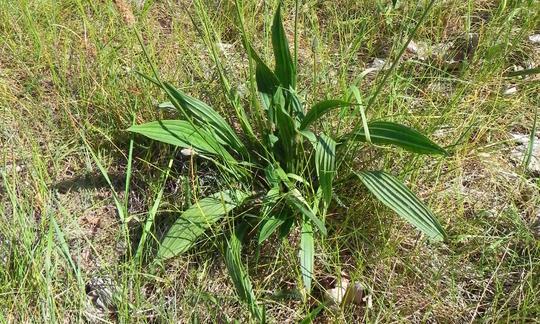

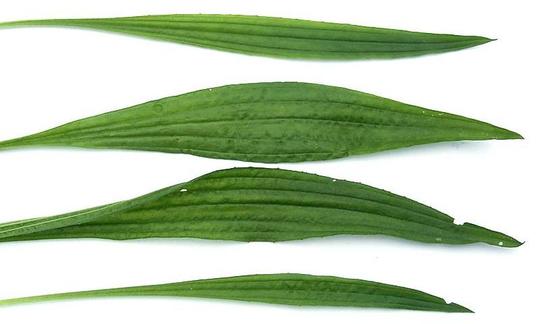

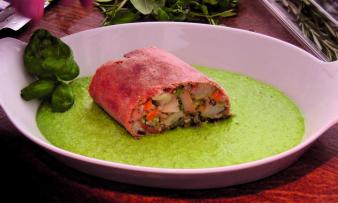
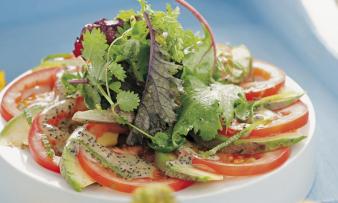
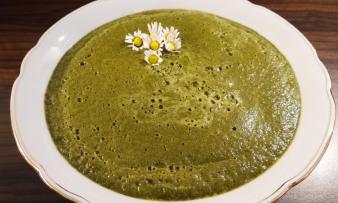





Comments